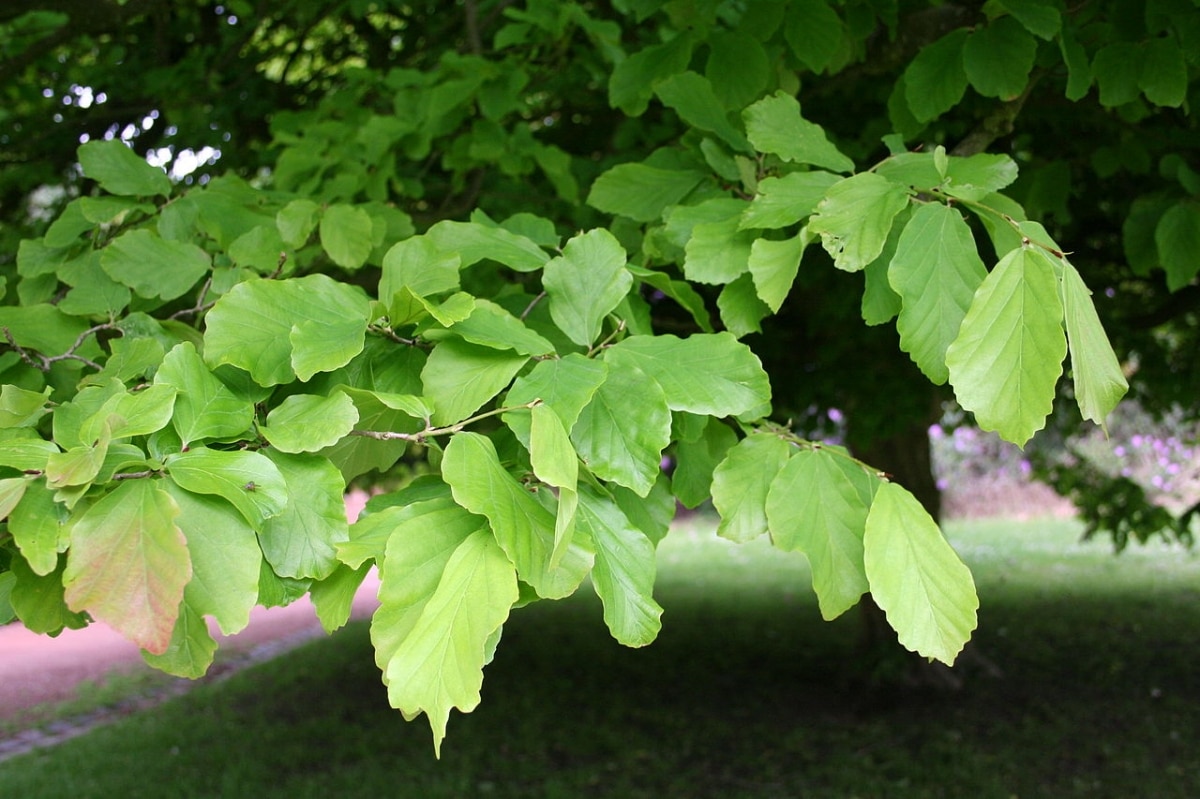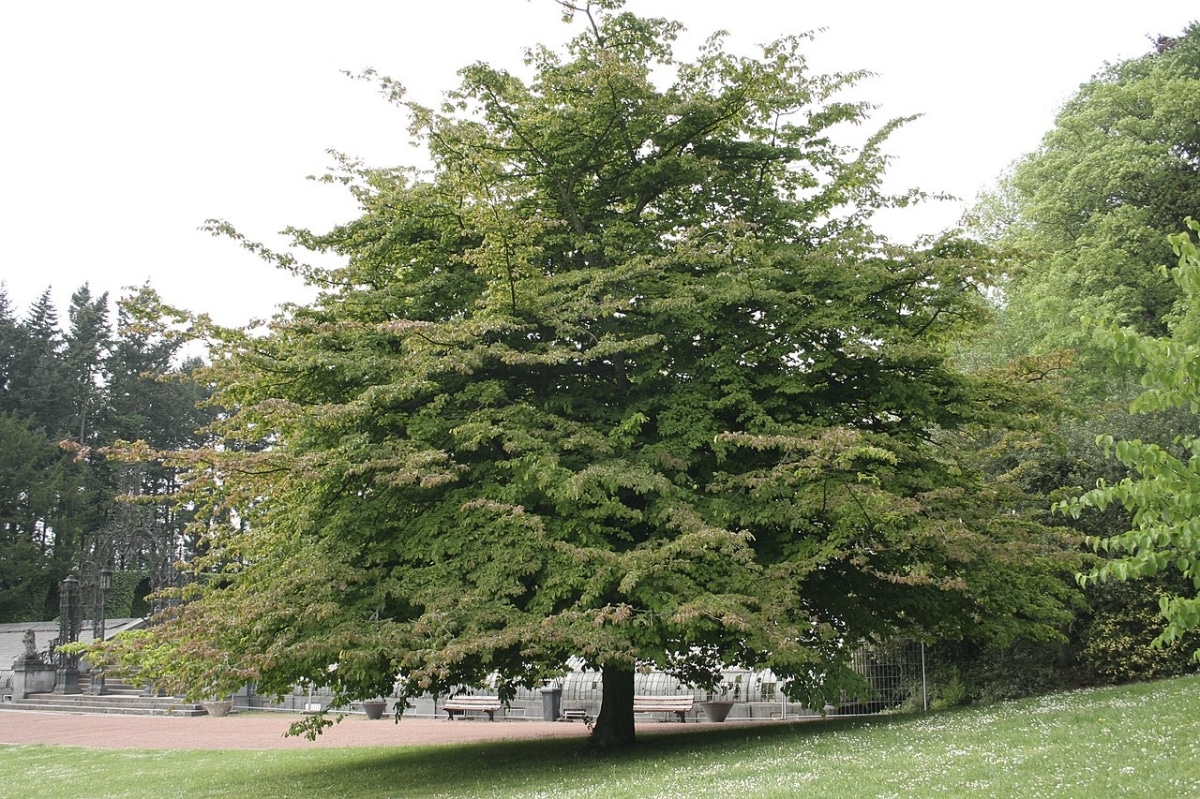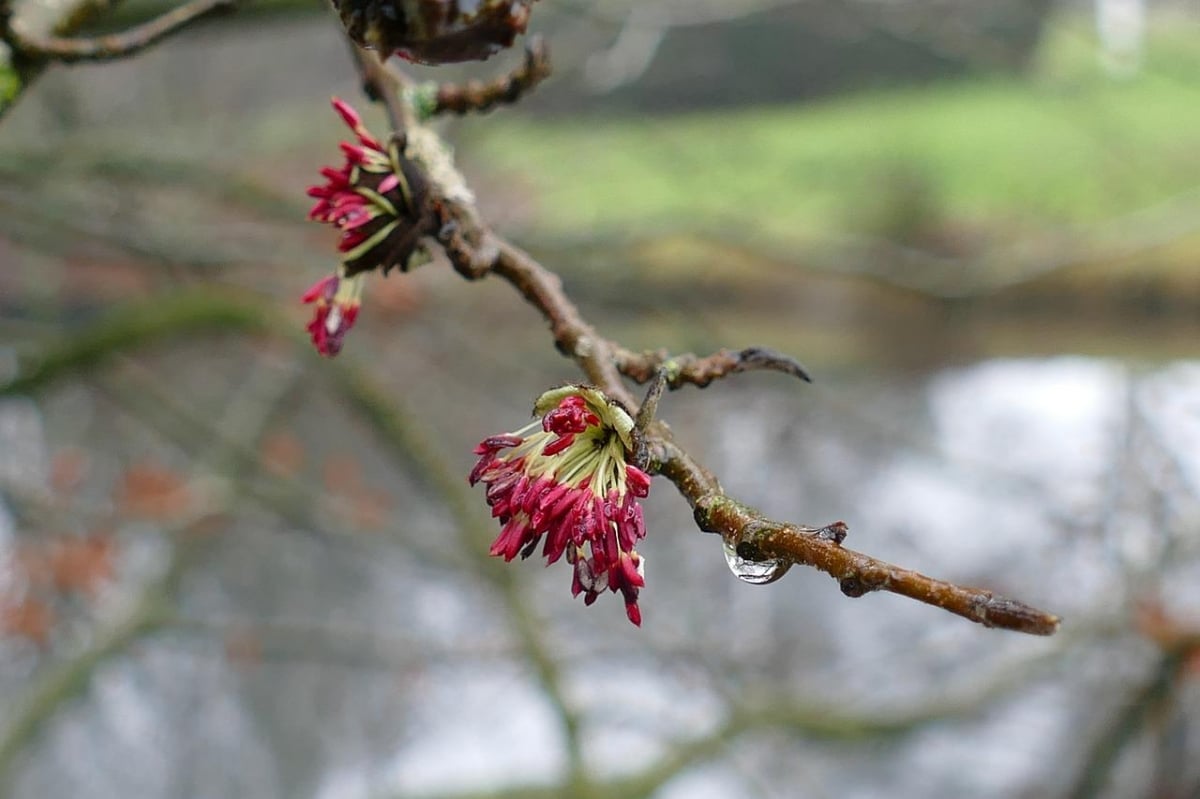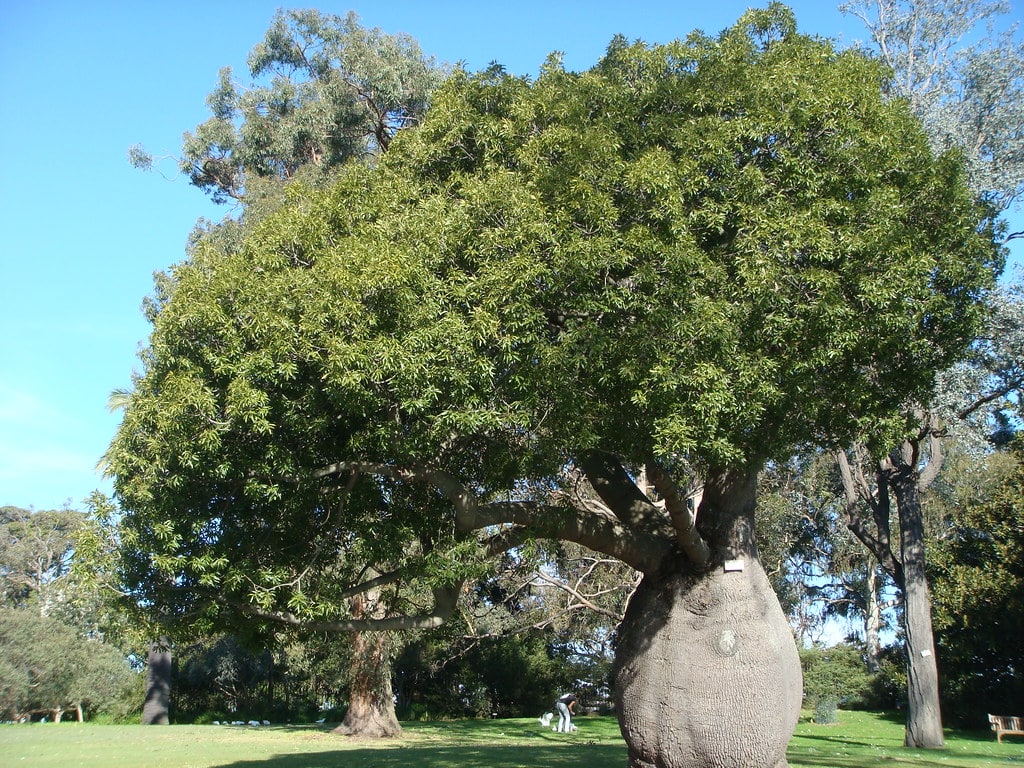
Image - Wikimedia / Jean-Pol GRANDMONT
La parrotia persica, known as the iron tree, is a plant with a broad, bushy crown that can make a garden look magnificent. When it matures, it becomes a great tree, worthy of admiration, which is why it is recommended to plant it in an area where it can grow to its heart's content, as it really is worth it.
It provides shade in summer, and its leaves turn orange-yellow and sometimes reddish in fall. During the winter, although it goes into rest, the branches look harmonious. For all this, we want you to know everything about him, the so-called iron tree.
What is the iron tree?

Image - Wikimedia /
It is a deciduous tree native to Europe and Asia, found mainly in the forests near the Caspian Sea. In the past it could even be found on the Iberian Peninsula, where it found refuge during the last glacial periods. But when these ended, their population was reduced and isolated in very specific areas of Eastern Europe and Asia. Anyway, luckily it is very popular as an ornamental tree, so there is no risk of extinction, at least for now.
The scientific or botanical name is parrotia persica, which has been accepted since 1831, when it was published in »Verzeichness der Pflanzen des Caspischen Meeres». Reaches a height of 15 meters, although sometimes it is found as a bush or small tree of 7-8 meters. Its crown, as we said at the beginning, is highly branched, and produces ovoid-shaped green leaves that measure between 10 centimeters long and 6 centimeters wide.
Its flowers appear before the leaves, towards the end of winter, and are red. And the fruits are capsules that protect two seeds.
Caring for the parrotia persica
It is a plant that so that it can live (and not survive) you need the following:
- A temperate climate with temperatures below zero in winter.
- A soil with an acidic or slightly acidic pH.
- Regular rains throughout the year.
- And sun or partial shade.
If our garden meets all these conditions, we can plant it in the ground and enjoy it from the first moment. But things change when the weather is not the most suitable, or if the tree is very young. What to do in these cases? If you find yourself in this situation, we advise you to do the following:
keep it in a pot

La parrotia persica can live very well in a pot, since it is a tree that resists pruning and from which it recovers without problems as long as drastic pruning is not practiced. I like to say that the best pruning is the one that goes unnoticed, since it is the one that has been done respecting the plant, its natural cycles, and its development. I think that all pruning should be like this, since if we remove thick branches or disfigure the crown, not only will it cost more to heal those wounds, but we could also shorten its life.
Therefore, it will always be better to cut or trim branches that are still green or tender, rather than one that has finished ripening and is very thick. This implies small pruning for several years, yes, but it is the only way to keep your potted iron tree healthy and beautiful, which in the end is what matters.
Transplant it whenever necessary
You should not keep it in the same pot always. It is important that you change it to a wider and higher one when the roots come out or when you see that the soil is very worn.. As a substrate you should put an acid one, like coconut fiber or one specific for acid plants, such as the brand Flower or the natureplant.
Anyway, if the soil in your garden is acidic, do not hesitate to plant it as soon as it measures 40 to 50 centimeters. In this way, you can have a large tree, which will look great.
Give it a moderate watering
He doesn't like dry land, so it should be watered frequently during the summer if it rains little, and more during a heat wave. The rest of the time, water will be added from time to time, but care must be taken that the roots are not flooded, since excess water causes damage that may be irreversible.

Likewise, must be watered with rainwater, but if this is not available, then you can use water suitable for consumption, or if we only have tap water and it is alkaline, we will lower the pH with a little lemon or vinegar. So that it does not drop too low, it is important to check the pH with a meter, such as this.
Pay it in spring and summer
It's a way for you to have a parrotia persica really healthy. So do not hesitate to pay it with natural fertilizers, such as these: earthworm humus, manure, or guano. But if it is in a pot and you want to achieve better results, we advise you to buy liquid fertilizers, since they are absorbed more quickly. In any case, read and follow the instructions that you will find on the package so as not to cause any problems.
What is its resistance to cold?

Image - Wikimedia / Jean-Pol GRANDMONT
La parrotia persica It is a tree that grows without difficulty in climates with mild summer temperatures and cold winters. Withstands moderate to intense frosts down to -20ºC, and even some English portals, such as DavesGarden.com say that it can withstand much more, up to -34ºC. But it does have to be protected from extreme heat, that is, from the one that makes temperatures touch and/or exceed 35ºC.
Have you heard of the iron tree?